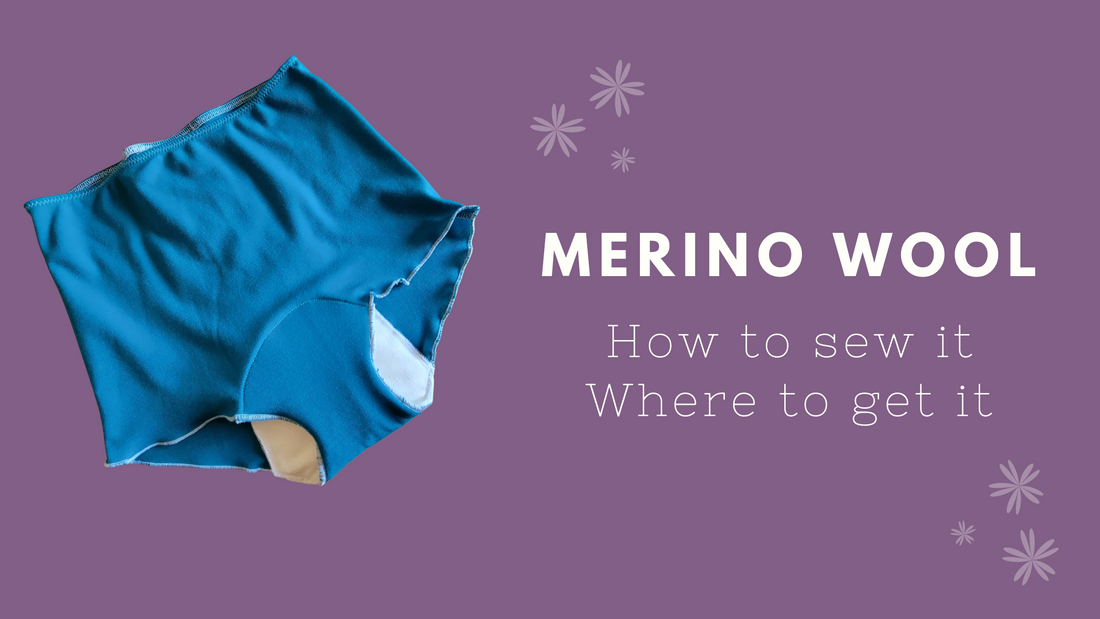Using merino wool for your sewing projects isn't as difficult as you would think!
Why use merino wool.
- It basically cleans itself. If not obviously soiled, you can hang it overnight and it will reset itself.
- Regulates temperature so you don't get hot or cold.
- Absorbs sweat and is good at wicking fluids away from the body.
- Doesn't get stinky.
- Today's merino is way softer than it used to be!
- You can lanolize it, which makes it so fluids won't go through the fabric.
How do you sew with it?
The rules for sewing merino are the same as any knit. A serger is easier, but a sewing machine will work if it's all you have. Use the same thread you do for your other fabrics. It doesn't usually fray.
Do I need to prewash the wool?
Unless you are felting interlock, you don't need to prewash merino wool.
Do you need to adjust sizing?
Most of the time you can follow the same size charts when using merino wool. Some merino wool doesn't have vertical stretch (up and down the body), which means you'll need to add some height to your snug fitting garments. Our underwear patterns have a version A and version B. Version A is higher rise and is ideal for merino wool with no vertical stretch. For our bras, follow the size charts as is. Our pants are already higher rise than usual so don't need adjustments for merino.
What does superwashed mean?
Superwashing is a technique where they strip the yarn, then coat it with an extremely fine layer of polymer plastic resin prior to knitting it. It makes the finished fabric softer and machine washable, but it's bad for the environment.
Most merino wool fabric sellers don't buy direct from manufacturers because of the expense - minimums can be as high as 800 yards per color. Because of this, they don't always know if their materials were superwashed.
Can I use any merino wool?
Pay attention to the Grams per Square Meter (GSM) weight on listings for merino wool fabrics. Anything under 200 GSM is going to be too light weight for undergarments. We find 225 to 250 GSM to be perfect for underwear and bras.
Where did we get our wool from?
Some of our best wool came from New Zealand Merino and Fabrics. Yawning Mama is located in the United States, but our orders from this company always arrived within a couple of weeks. In New Zealand, they call spandex "elastane". So if you use their search bar and enter elastane, you'll get a list of good bra making merino fabrics. The "95% merino wool and 5% elastane jersey knit 240g" fabrics are excellent. As are the "98% Merino 2% elastane Sweatshirting" fabrics, which are what you may know as French Terry.
If you don't want spandex in your fabric, Hobby Fabric on Etsy has 100% merino wool material that works well for bras and underwear. This fabric doesn't have vertical stretch like the spandex blends do, but it's super soft and has good recovery. The category 225- 240 gsm Merino Rib is what you want! We've found this wool does fine if you accidentally run it through the washer and dryer, which means it's likely superwashed (though they were unable to tell me for sure).
For interlock that can be felted, Nature's Fabric has the best. This wool is around 500GSM after felting, and it's the softest we've found. Note that it's very thick and doesn't have good recovery, so you may need to adjust your patterns. I have confirmed that this wool is not superwashed.
How do you wash merino wool garments?
Handwashing is preferred for merino wool. I like to use a brand called Soak, which is a soap that doesn't require rinsing. Just soak in the sink for 15 minutes, wring out what you can with a towel, then hang to dry. Wool takes some time to dry, so give it a day or so before wearing. Avoid hanging outside to dry, because there are protein loving bugs that like to eat wool.
